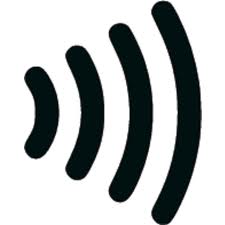
ventrachicago.com
MPC Research Assistant Melanie Truhn contributed to this post.
Published twice a month, MPC’s Talking Transit provides updates about transit-related activities around the world.
Get In the Loop on all the latest local, national, and international transit headlines. >>
Did You Know? The new Ventra open fare payment system will save the Chicago Transit Authority $50 million over 12 years.
Next summer, Chicago will become the first major U.S. city with an open fare payment system for its public transportation network. Called Ventra – Latin for “windy” – the new system will speed up boarding, reduce the need for riders to carry multiple cards, and save money. With one Ventra payment card, riders will be able to travel on Chicago Transit Authority (CTA) bus routes and rail lines, as well as Pace suburban bus routes. The switch to an exclusively “tap and go” payment system will reduce wait times at rail station turnstiles and in bus boarding lines and eliminate the need to dig for correct change to ride transit.
Transit riders will have a number of “tap and go” payment options:
- The Ventra Card will work like the current Chicago Card Plus and will have a Mastercard logo for prepaid non-transit purchases.
- For less frequent riders and tourists, the Ventra Ticket will be valid for a single ride or one-day pass.
- Don’t want to have a separate transit card? The system will allow riders to use their personal contactless credit or debit card to “pay as you go” or add a 30-day, 7-day and 1-day transit pass. (If your debit or credit card has

Contactless credit card symbol
- Eventually, riders will simply tap their mobile phones and pay with the Ventra app.
Ventra Cards and Ventra Tickets will be sold at vending machines in rail stations, and at up to 2,500 retail locations throughout Chicago and the suburbs. New vending machines at stations will accept cash, credit and debit cards. Busses will still accept cash.
The Ventra Card also will include an optional pre-paid debit card feature for everyday spending, such as paying bills online and buying groceries. Once the function is activated, Ventra cardholders will be able to add funds with cash at reloading kiosks located across the city, and transfer funds online from a bank account or via direct deposit. Riders who receive a reduced fare will use the Ventra Card without the pre-paid debit card option.
Thanks to Ventra, Pace and CTA will save money and get needed upgrades to stations and on buses, plus expand the non-transit retail locations where fare products can be purchased. The $508 million dollar combined contract with Cubic Transportation, the lead in a consortium of private partners that will operate the Ventra systems with First Data and Mastercard, includes installing new touch pads on the existing turnstiles and vending machines in stations and new readers on buses on both the Pace and CTA systems and expanding the retail network in which customers can purchase fare products. Cubic will provide all of the fare collection equipment, maintenance and support. Once the system is live, CTA and Pace will pay Cubic a monthly fee plus a fee per “tap,” or paid fare, which incentivizes the private partner to encourage more people to take transit. Over the course of the 12-year contract, the Ventra system is expected to save CTA about $50 million. CTA and Pace will retain full control over their respective fare policies.
The Ventra system will be the first open fare payment system for transit in the U.S., but not the first in the world. Berlin, Germany, set up an open fare system in 1999 after the reunification of the East and West. The city wanted to relieve citizens going from one mode to another from struggling with several different tickets and passes. Fares are collected by the regional transportation agency and redistributed to the operating agencies depending on monthly ridership. Hong Kong’s open fare payment, called the Octopus card, also has a pre-paid debit card for everyday purchases. Technological advancements have improved the Octopus card’s utility, allowing cardholders to use their card to access their residential and commercial buildings and pay parking meters.
In 2011, Gov. Pat Quinn signed HB 3597, mandating the Regional Transportation Authority (RTA) to develop a universal fare card for use on all bus and rail services provided by the Chicago Transit Authority (CTA), Metra and Pace, by Jan. 1, 2015. Although Metra will not be part of the initial launch of the Ventra system, the mandate requires modernizing the system by 2015 for cohesive movement of people throughout the region. Using a single payment system for northeastern Illinois’ entire transit network will increase efficiency and reduce confusion for commuters and tourists.
Improving transportation infrastructure means more than maintenance and building new roads, bridges and rail lines. Through Intelligent Transportation Systems, or ITS, like open fare payment systems, we can make transit more convenient, improve traffic flow, decrease delays, and give riders up-to-the-minute system information at a relatively low cost – and, in the case of Ventra, save money. The CTA’s Bus and Train Trackers, another example of ITS, have been wildly successful at making it easier to ride transit and attracting new riders. Ventra is the next step.
But these are just two few examples of how technology is improving transit in metropolitan Chicago. There’s tremendous opportunity to employ proven ITS techniques to maximize our entire transportation network. Cities around the world are proving the real potential of ITS by implementing such technologies as congestion pricing (see Chicago Metropolitan Agency for Planning’s latest analysis), variable priced parking (pricing parking spots by time of day or day of week to manage demand), transit signal priority for buses (so that red lights turn green as buses approach an intersection), dynamic crosswalks signals, and smartphone apps.
So what’s next Chicago?